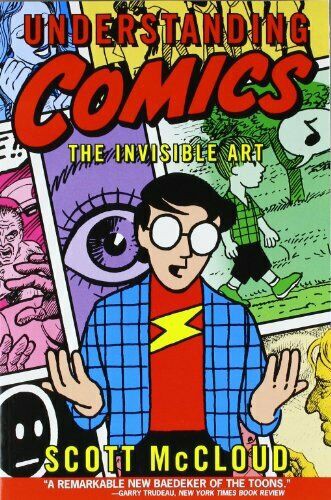_ImJustKen_ reviewed Comics richtig lesen by Scott McCloud
Toll
5 stars
Ziemlich grossartiges Buch, habe viel gelernt, sehr gut gemacht. Anschaulich und unterhaltsam! Für alle die Comics mögen!

Paperback, 224 pages
English language
Published April 27, 1994 by Harper Paperbacks.
Praised throughout the cartoon industry by such luminaries as Art Spiegelman, Matt Groening, and Will Eisner, Scott McCloud's Understanding Comics is a seminal examination of comics art: its rich history, surprising technical components, and major cultural significance. Explore the secret world between the panels, through the lines, and within the hidden symbols of a powerful but misunderstood art form.
Ziemlich grossartiges Buch, habe viel gelernt, sehr gut gemacht. Anschaulich und unterhaltsam! Für alle die Comics mögen!
Interesting read about some of the theory behind how comics work. Also covers some of the history.
awesome book/graphic non-fiction (how do i describe this genre anyhow?)
although i'm a recent convert to the graphic format, as well as a huge fan, i didn't truly appreciate the amount of thought and work that goes into panelled sequential art :)
where to start?
how about the japanese style being so different from the western form - it's isolation allowed them to form entirely new ways of visual expression. and not just what they put of the paper - how they tell a story. the transition between panel to panel can be expressed as 6 types and the relative proportions in japan are very different from american and european comics.
even the space between panels - where we, as the audience fill in with closure - or the length of panels have meaning. heck, the actual panel itself, or the lack there of, is an artistic and story telling …
awesome book/graphic non-fiction (how do i describe this genre anyhow?)
although i'm a recent convert to the graphic format, as well as a huge fan, i didn't truly appreciate the amount of thought and work that goes into panelled sequential art :)
where to start?
how about the japanese style being so different from the western form - it's isolation allowed them to form entirely new ways of visual expression. and not just what they put of the paper - how they tell a story. the transition between panel to panel can be expressed as 6 types and the relative proportions in japan are very different from american and european comics.
even the space between panels - where we, as the audience fill in with closure - or the length of panels have meaning. heck, the actual panel itself, or the lack there of, is an artistic and story telling device.
the chapters towards the end decribed the 6 step process to arriving at the 'surface' - the thing we see (and judge) at the end, and this was the most informative for the wannabes.
i highly reccommend this book to any kid who thinks he'll make comics when he grows up - you'll get a better appreciation of what's in front of you, and you'll be inspired to start tackling the steps now.


